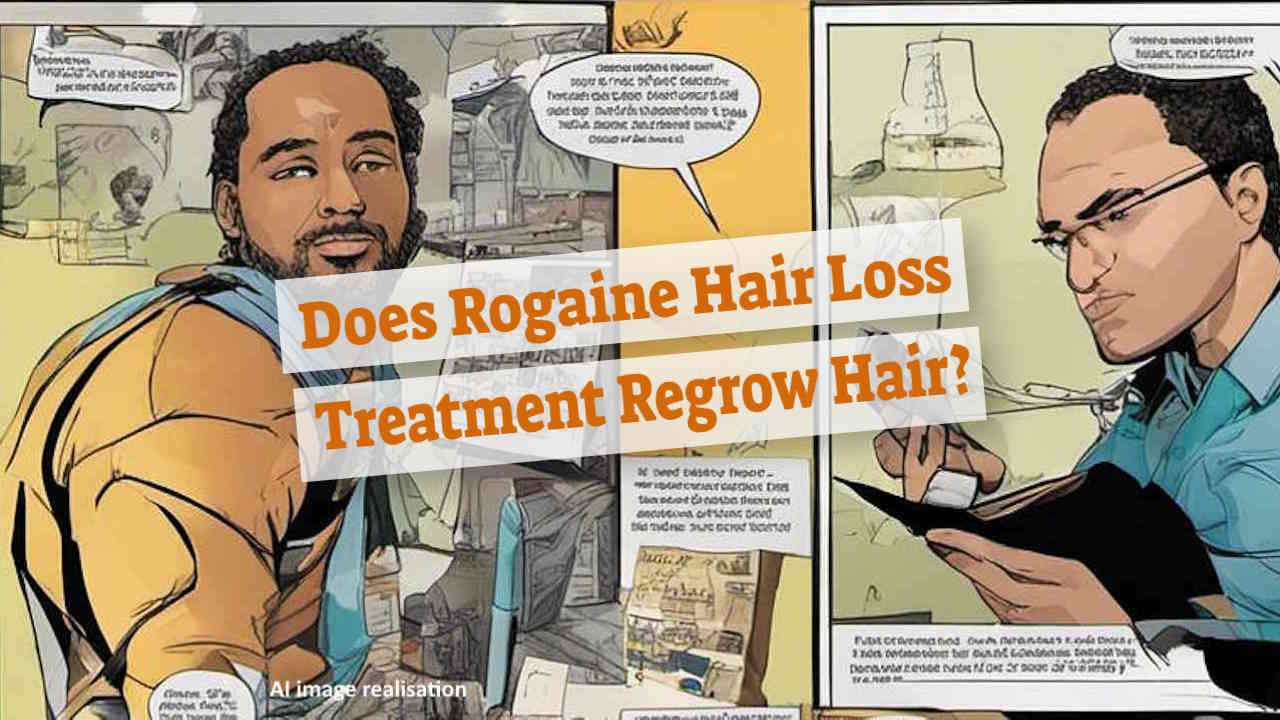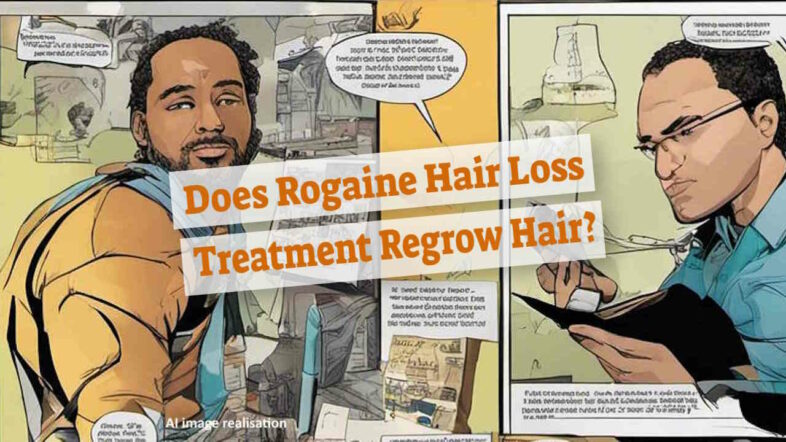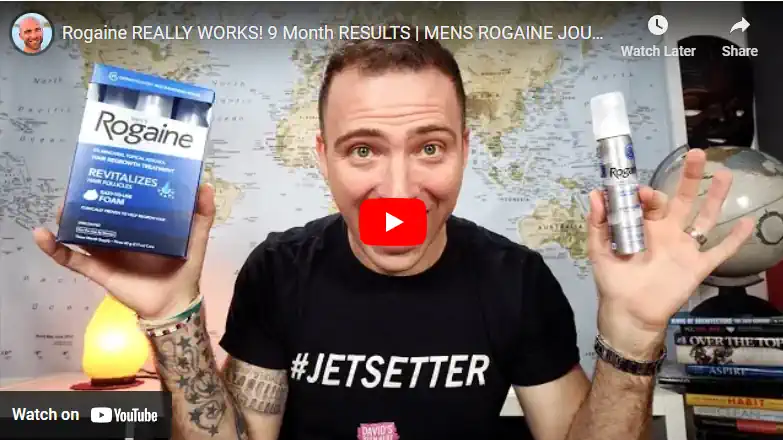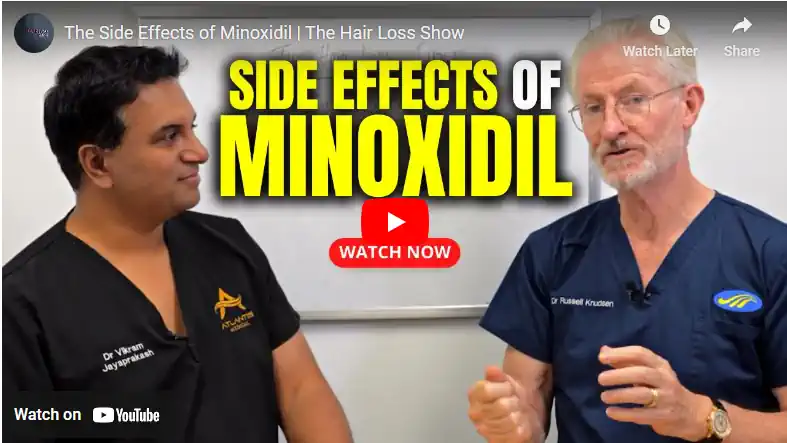Does hair really regrow after using Rogaine? In this article, we answer the question everyone considering using it asks; “Does Rogaine Hair Loss Treatment Regrow Hair?
Losing your hair can be a nerve-wracking experience, causing distress and loss of self-esteem. Rogaine, reportedly the first FDA-approved brand for hair loss treatment to go on the market has for many years promised to tackle this issue by stimulating fuller, thicker hair regrowth.
This blog will delve into how Rogaine works and its effectiveness in regrowing lost hair – providing you with essential information to make informed choices about your health. Let's uncover whether it truly fulfills its claim or not.
Key Takeaways
- Rogaine contains minoxidil, which promotes hair growth by increasing blood flow to the hair follicles.
- Results may vary, but some users have seen improvements in hair regrowth within 2 to 4 months of using Rogaine.
- It is important to have realistic expectations and be patient, as it may take up to a year of regular use for significant hair regrowth.
- Common side effects of Rogaine include scalp irritation and itching, but these can be managed by following usage instructions and consulting with a healthcare professional if needed.
How Does Rogaine Work?
Minoxidil plays a crucial role in promoting hair growth, and the mechanism of action for Rogaine involves the application of this topical drug to the scalp.

Minoxidil's role in promoting hair growth
Minoxidil is the key part of Rogaine. It helps hair grow back thicker and fuller. It works by giving more blood and food to the hair roots. This makes new hairs grow in place of lost ones.
Using Minoxidil on your head can help grown-up men and women with a certain type of baldness. More than that, it has even helped some people with frontal baldness too! But, remember, everyone's body reacts differently to drugs – not all will see their hair grow back like before.
Make sure you know this before using Minoxidil or Rogaine.
Mechanism of action for Rogaine
Rogaine works by using minoxidil to promote hair growth. Minoxidil increases blood flow and nutrients to the hair follicles, stimulating hair growth. It is applied topically as a solution or foam directly onto the scalp.
This helps in regrowing thicker, fuller hair for people with hereditary hair loss. Rogaine has been clinically proven to be effective in regrowing hair in as little as 3 months.
Effectiveness of Rogaine in Regrowing Hair
Rogaine has shown promise in regrowing hair, but it's important to have realistic expectations and understand the timeframe for seeing results.
Realistic expectations for hair regrowth
Rogaine can help regrow hair for some people, but it's important to have realistic expectations. In clinical studies, about forty percent of users saw hair regrowth with Rogaine. However, results may vary and not everyone will see the same level of improvement.
It's also important to note that hair regrowth takes time. You may start seeing results in as little as three months, but it could take up to six months or longer for noticeable changes.
Factors such as the severity of your hair loss and consistency in using Rogaine can also impact effectiveness. So while Rogaine can be an effective treatment for hair loss, it's essential to understand that individual results may differ.
The frame for seeing results
Rogaine is a hair growth treatment that can take time to show results. Here is a general timeframe for when you may start seeing the effects:
- Within 2 to 4 months: Some users may see initial signs of hair regrowth, such as small hairs or decreased shedding.
- Around 6 months: You may notice more noticeable improvements in hair density and thickness.
- 9 to 12 months: Continued use of Rogaine can lead to significant hair regrowth for many individuals.
Factors that may impact effectiveness
Certain factors can influence the effectiveness of Rogaine in regrowing hair. Firstly, it is important to have realistic expectations for hair regrowth. While Rogaine has shown positive results in many cases, individual outcomes may vary.
Secondly, the timeframe for seeing results can differ from person to person. Some individuals may start seeing improvements within a few months, while others may take longer. Lastly, there are certain factors that may impact the effectiveness of Rogaine, such as age, extent of hair loss, and adherence to regular usage.
It is crucial to follow the recommended usage instructions and consult with a healthcare professional if you have any concerns or questions about using Rogaine effectively.
Output:
Side Effects and Considerations
Rogaine may cause common side effects such as itching or irritation; those with heart conditions should consult a doctor before using Rogaine.
Common side effects of Rogaine
Rogaine, a hair loss treatment, may have some common side effects. These side effects can include scalp irritation, such as redness or itching. Some people may experience dryness or flaking of the scalp as well. In rare cases, Rogaine may cause unwanted hair growth on other parts of the body. It is important to follow the instructions and guidelines provided when using Rogaine to minimize these potential side effects. Remember to consult with a healthcare professional if you experience any severe or persistent side effects while using Rogaine.
Who should and should not use Rogaine
Rogaine can be used by both men and women who are experiencing hair loss. It is especially effective for people with hereditary hair loss, as it stimulates the hair follicles to regrow thicker and fuller hair.
However, there are some individuals who should avoid using Rogaine. This includes pregnant or breastfeeding women, individuals under 18 years old, and those who have scalp problems or other medical conditions.
It's important to consult with a dermatologist before starting any hair loss treatment to determine if Rogaine is suitable for you.
Management of potential side effects
Managing potential side effects is important when using Rogaine for hair loss treatment. Here are some tips to help minimize any discomfort or adverse reactions:
- If you experience scalp irritation or itching, try using the foam version of Rogaine instead of the solution. The foam may be less likely to cause these side effects.
- Avoid applying Rogaine to a recently irritated or sunburned scalp, as this can increase the risk of irritation.
- Be mindful of your application technique. Follow the instructions carefully and apply the recommended amount evenly across your scalp. Avoid excessive rubbing or massaging, as this can lead to more irritation.
- If you notice excessive hair shedding during the first few weeks of treatment, do not panic. This is a normal part of the process as old hairs make way for new ones. However, if this persists or worsens over time, consult with a dermatologist.
- It's important to continue using Rogaine regularly as directed by your healthcare provider, even if you do not see immediate results. Consistency is key to reaping the benefits of this treatment.
- If you experience any severe side effects such as chest pain, lightheadedness, or rapid heartbeat, seek medical attention immediately and discontinue use until cleared by a healthcare professional.
Conclusion
Rogaine, a popular hair loss treatment, has been clinically proven to regrow hair in individuals with hereditary hair loss. By stimulating the hair follicles and increasing blood flow, Rogaine promotes new hair growth in as little as three months.
While it may not work for everyone and some people may experience side effects, many users have seen positive results with this FDA-approved treatment.
Does Rogaine Hair Loss Treatment Regrow Hair? – FAQs
1. What is Rogaine hair loss treatment?
Rogaine is a powerful, FDA-approved, over-the-counter treatment for thinning hair and balding. It includes a topical solution and oral minoxidil to promote hair growth.
2. How does Rogaine work to regrow hair?
Rogaine works by using its main parts – the topical solution or oral Minoxidil – to boost scalp health, fostering better conditions for your own natural hair restoration processes.
3. Is Rogaine recommended by doctors?
Yes, Rogaine is often suggested by dermatologists as a reliable choice among various hair care solutions available in the market for preventing hair loss and promoting new growth.
4. Can I see before-and-after results with this treatment?
Absolutely! The “before and after” scenes of using Rogaine offer visible proof of its effectiveness in treating both mild-to-severe cases of thinning or baldness.
5. Where can I buy Rogaine products?
You can find these potent treatments in most pharmaceutical shops offering over-the-counter medicine; they are also accessible on many online platforms that sell authentic healthcare goods.






